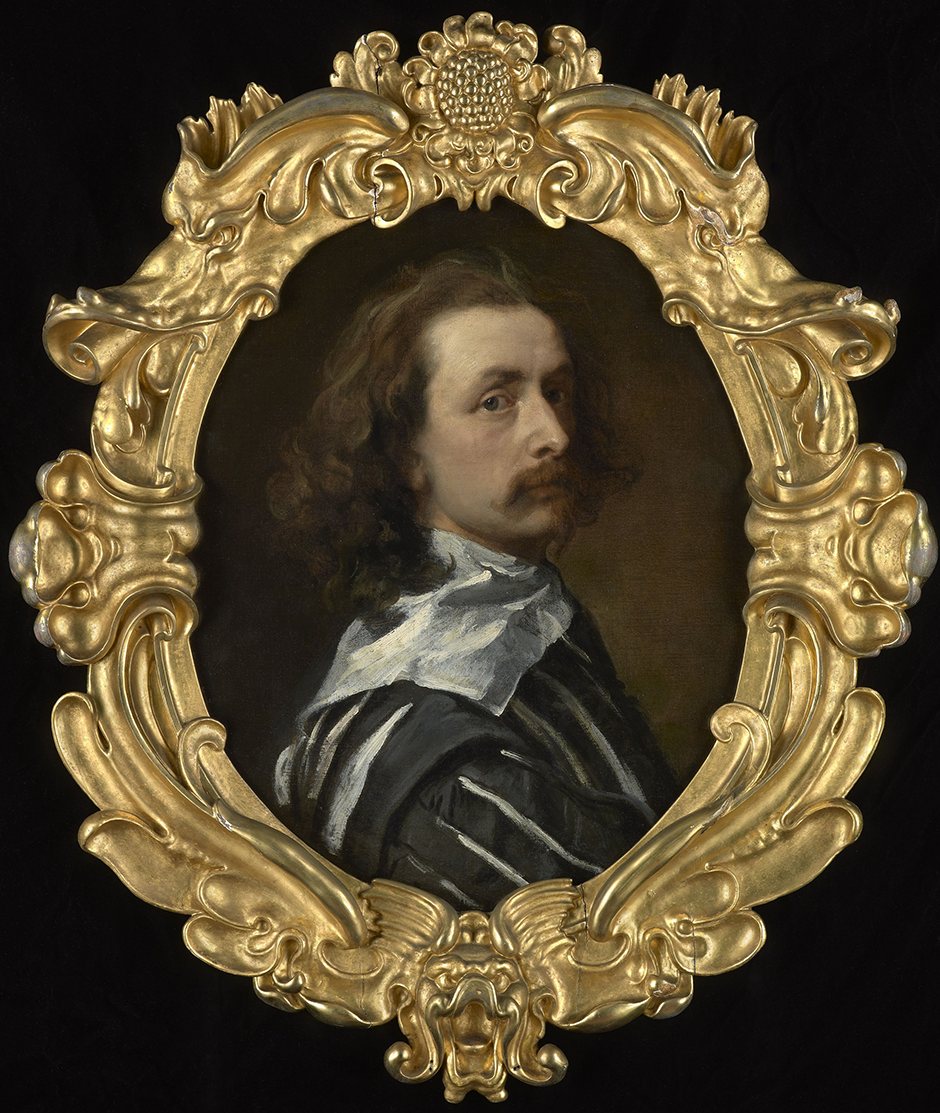.jpg)
Attributed to Sir Anthony van Dyck (Antwerp 15991641 London) , A portrait of a noblewoman
Sir Anthony van Dyck (Dutch: Antoon van Dyck [ˈɑntoːɱ vɑn ˈdɛik]; 22 March 1599 - 9 December 1641) was a Flemish Baroque artist who became the leading court painter in England after success in the Spanish Netherlands and Italy.. The seventh child of Frans van Dyck, a wealthy Antwerp silk merchant, Anthony painted from an early age. He was successful as an independent painter in his.
.jpg)
Sir Anthony van Dyck (Antwerp 15991641 London) , Head study of a man in a ruff Christie's
Sir Anthony van Dyck (Dutch: Antoon van Dyck [ˈɑntoːɱ vɑn ˈdɛik]; 22 March 1599 - 9 December 1641) was a Flemish Baroque artist who became the leading court painter in England after success in the Spanish Netherlands and Italy. The seventh child of Frans van Dyck, a wealthy Antwerp silk merchant, Anthony painted from an early age..
.jpg)
Sir Anthony van Dyck (Antwerp 15991641 London) , Portrait of a Cavalier Christie's
Sir Anthony van Dyck. Flemish, 1599 - 1641. Dyck, Anthonie van; van Dyck, Anthony Sir
.jpg)
Circle of Sir Anthony van Dyck (Antwerp 15991641 December) , A bearded man in profile, bust
Anthony Van Dyck Flemish Painter Born: March 22, 1599 - Antwerp, Belgium Died: December 9, 1641 - London, England Movements and Styles: The Baroque , Dutch Golden Age , Grand Manner Portraiture

Experts Identify £1Million 17th Century Anthony Van Dyck Painting After Spotting It Online
Anthony van Dyck (1599-1641) Van Dyck's early work was based very firmly on that of Rubens (there is no trace of influence from van Balen); experts still sometimes have difficulty in differentiating their hands, although van Dyck's style was typically less energetic and more nervously sensitive than that of his supremely robust mentor, reflecting differences in character and constitution.

SelfPortrait Anthony van Dyck 49.7.25 Work of Art Heilbrunn Timeline of Art History
Sir Anthony van Dyck (Dutch pronunciation: [vɑn ˈdɛi̯k], many variant spellings; 22 March 1599 - 9 December 1641) was a Flemish Baroque artist who became the leading court painter in England, after enjoying great success in Italy and the Southern Netherlands.
.jpg)
Sir Anthony van Dyck (Antwerp 15991641 London) , Portrait of John VIII, Count of NassauSiegen
Anthony van Dyck was a prominent Flemish court painter of the Baroque era.Both Van Dyck's color palette and adept use of composition were influenced by the Renaissance painter Titian.Born on March 22, 1599 in Antwerp, Belgium, at the age of 10 he was apprenticed under Hendrick van Balen, and by 1618 had been accepted as a master painter in the Guild of St. Luke.
.jpg)
Sir Anthony van Dyck (Antwerp 15991641 London) , Head study of a bearded man, in profile
Anthony van Dyck. Born into a prosperous mercantile family in Antwerp, Van Dyck had, by age ten, registered with the city's Guild of St. Luke as an apprentice under Hendrick van Balen. By 1618, he had qualified as a master and was soon working in Peter Paul Rubens's workshop. After a brief period in England, Van Dyck traveled, in 1621, to.

Why Anthony van Dyck was Britain's first art star Art and design The Guardian
Overview Catalogue Entry Signatures, Inscriptions, and Markings Provenance Exhibition History References Notes Title: Study Head of a Young Woman Artist: Anthony van Dyck (Flemish, Antwerp 1599-1641 London) Date: ca. 1618-20 Medium: Oil on paper, laid down on wood Dimensions: 22 1/4 x 16 3/8 in. (56.5 x 41.6 cm)
.jpg)
Attributed to Sir Anthony van Dyck (Antwerp 15991641 London) , Portrait of a gentleman, bust
Sir Anthony van DyckAntoon van Dyck [ˈɑntoːɱ vɑn ˈdɛik] [a] 22 March 1599 - 9 December 1641) [2] Flemish Baroque artist who became the leading court painter in England after success in the Spanish Netherlands Italy The seventh child of Frans van Dyck, a wealthy Antwerp silk merchant, Anthony painted from an early age.

Frick Collection Plans Show on the Flemish Painter Anthony van Dyck The New York Times
Anthony van Dyck. Born on the 22 March 1599, Anthony van Dyck was the second son and seventh child to a wealthy and well travelled cloth merchant from Antwerp. Anthony had a very close relationship with his mother, a skilled embroiderer who created landscapes and figures in her works. This was van Dyck's first exposure to art and on seeing her.

FOLLOWER OF SIR ANTHONY VAN DYCK PORTRAIT OF ADAM DE COSTER Old Master Paintings 2020
An introduction to Sir Anthony van Dyck by Catharine MacLeod, Curator of Seventeenth-Century Portraits.From assistant in Rubens' Antwerp studio to leading pa.

Van Dyck at the Frick, Documenting Aristocracy The New York Times
Anthony van Dyck Flemish ca. 1620-21 On view at The Met Fifth Avenue in Gallery 618 Lifting a languid hand to his chin, the young Van Dyck presents himself as an aristocrat, excluding any signs of his trade such as a palette and brushes.
.jpg)
Circle of Sir Anthony van Dyck (Antwerp 15991641 London) , Portrait of a bearded man, bust
Van Dyck depicts the duke of Richmond and Lennox as a paragon of aristocratic self-possession and nonchalance. With a fashionable blond "lovelock" spilling over his lace collar, the duke wears the insignia of the Order of the Garter, England's highest order of chivalry.

Anthony van Dyck (15991641) Portrait of a Man
Anthony van Dyck 1599 - 1641 Image: After Anthony van Dyck, Portrait of the Artist, about 1750-1825 (Detail) Van Dyck was the most important Flemish painter of the 17th century after Rubens, whose works influenced the young Van Dyck. He also studied and was profoundly influenced by the work of Italian artists, above all, Titian.

STUDIO OF SIR ANTHONY VAN DYCK PORTRAIT OF JAMES STUART (1612 1655), FOURTH DUKE OF LENNOX
Anthony van Dyck (born March 22, 1599, Antwerp, Spanish Netherlands [now in Belgium]—died December 9, 1641, London, England) after Peter Paul Rubens the most prominent Flemish Baroque painter of the 17th century.